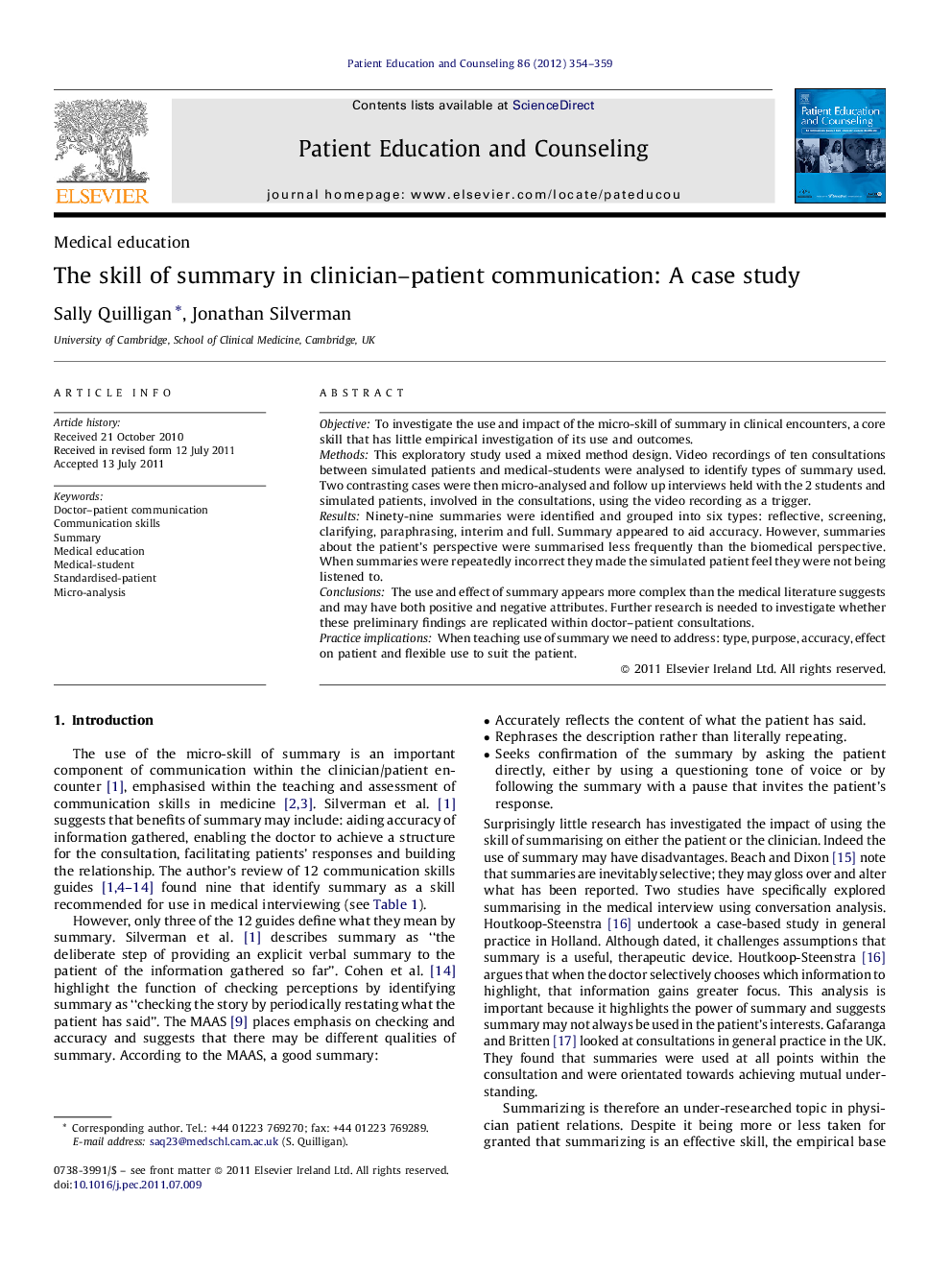| Article ID | Journal | Published Year | Pages | File Type |
|---|---|---|---|---|
| 3813658 | Patient Education and Counseling | 2012 | 6 Pages |
ObjectiveTo investigate the use and impact of the micro-skill of summary in clinical encounters, a core skill that has little empirical investigation of its use and outcomes.MethodsThis exploratory study used a mixed method design. Video recordings of ten consultations between simulated patients and medical-students were analysed to identify types of summary used. Two contrasting cases were then micro-analysed and follow up interviews held with the 2 students and simulated patients, involved in the consultations, using the video recording as a trigger.ResultsNinety-nine summaries were identified and grouped into six types: reflective, screening, clarifying, paraphrasing, interim and full. Summary appeared to aid accuracy. However, summaries about the patient's perspective were summarised less frequently than the biomedical perspective. When summaries were repeatedly incorrect they made the simulated patient feel they were not being listened to.ConclusionsThe use and effect of summary appears more complex than the medical literature suggests and may have both positive and negative attributes. Further research is needed to investigate whether these preliminary findings are replicated within doctor–patient consultations.Practice implicationsWhen teaching use of summary we need to address: type, purpose, accuracy, effect on patient and flexible use to suit the patient.
